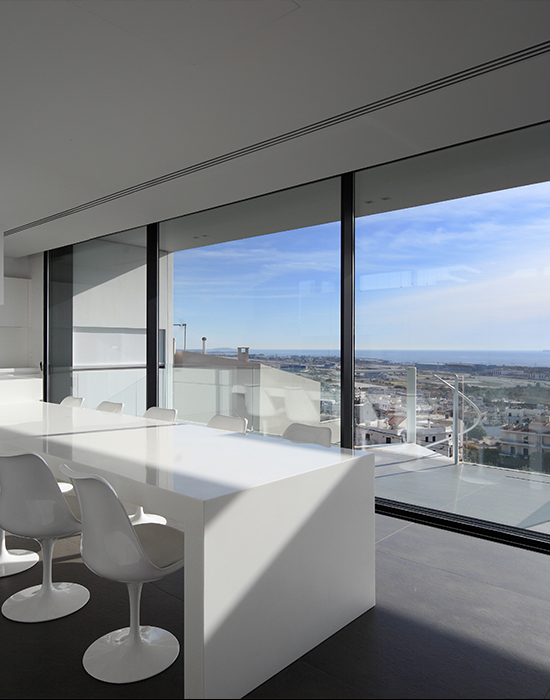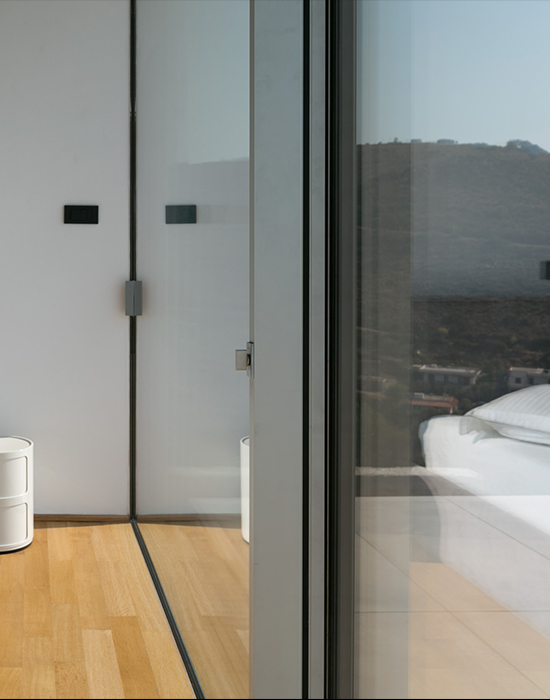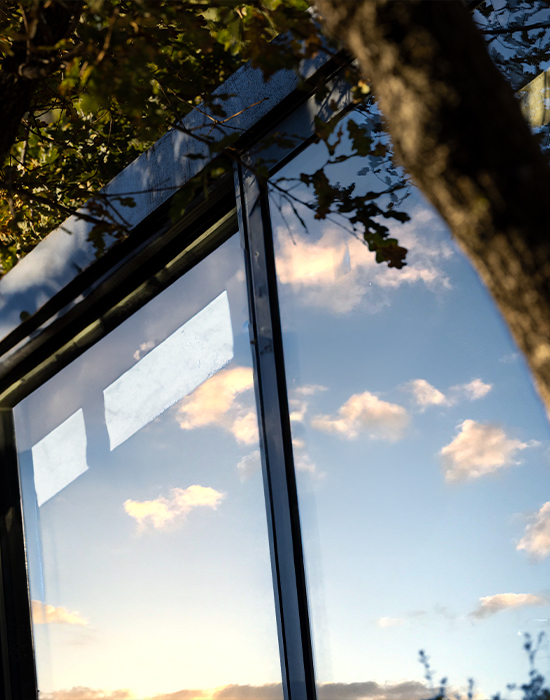
The World of Sound: What It Is and Why It Matters
Sound is all around us. From the soft rustling of leaves (20 dB) to the deafening siren of an ambulance (120 dB), sounds shape our daily lives. In urban environments, noise from traffic, construction sites, or music can significantly reduce the quality of life in homes and workplaces. The need for effective sound insulation is more urgent than ever.
Sound has two main characteristics: intensity (measured in dB) and frequency (Hz). Human hearing is most sensitive to the low and mid-frequency range (around 1000 Hz), which is why acoustic engineering focuses primarily on frequencies from 100 to 3150 Hz, the range that covers most everyday sounds such as conversations, music, and urban noise.
What Is Sound Insulation?
Sound insulation refers to the ability of a building element to reduce sound transmission from one space to another. In the case of aluminium windows and doors, the goal is to minimize airborne sound entering from the outside environment into interior spaces and vice versa.
The measurement of sound insulation is expressed by the Sound Reduction Index (R). The higher the R value, the better the material’s sound insulation capacity. Since R varies with frequency, the Weighted Sound Reduction Index Rw is used, accompanied by correction factors:
- C, for mid-to-high frequency sounds (e.g., speech, music)
- Ctr, for low-frequency sounds (e.g., traffic, heavy vehicles)
Sources of Noise in the Built Environment
Noise sources in buildings vary and affect acoustic comfort differently. Noise from speech, TV, radio, and human activities dominates mid-to-high frequencies. In contrast, noise from urban traffic, bass-heavy music, and slow-moving trains is characterized by lower frequencies and longer duration. To reflect real-life acoustic performance, the correction factors C and Ctr are used.
Evaluating window and door performance based on Rw (C; Ctr) allows a more realistic estimate of their behavior according to project-specific conditions.


Factors Affecting Sound Insulation in Aluminium Frames
Alumil’s systems are key elements in sound insulation and acoustic comfort, often covering a large portion of a building’s exterior.
Their performance depends on:
Frame Type:
- Tilt-and-turn frames achieve the highest sound insulation, up to 48 dB, thanks to superior airtightness.
- Standard sliding frames, sealed with brushes, offer lower insulation, up to 38 dB.
- Minimal sliding frames provide satisfactory insulation up to 47 dB due to concealed sashes and frame encasement.
- Lift & slide frames significantly outperform standard sliding, up to 42 dB, due to rubber seals.
- Entrance doors up to 44 dB.
- Curtain walls can reach Rw values up to 47 dB.
- Internal office partitions can match conventional walls, up to 49 dB.
Glazing:
The glass area is usually the largest element and often defines the system’s sound insulation. Key factors include:
- Using double or triple glazing with varying thicknesses (≥6 mm)
- Asymmetric glazing (e.g., 8 / 16 / 6 mm) to avoid acoustic resonance effect
- At least one laminated glass pane, preferably with an acoustic PVB membrane
- PVC spacers instead of aluminum or steel
- 16–20 mm cavity filled with 90% argon gas
An ideal glazing composition can achieve Rw values up to 54 dB.
Installation:
Even the best aluminium systems with high-performance glazing cannot provide effective sound insulation without proper installation.
In practice, installation quality significantly impacts final results.
Key points:
- Use sound-insulating polyurethane foam or multifunctional self-expanding pre-compressed tapes between frames and adjacent building elements.
- Avoid drilling through thermal breaks (polyamide), a common practice that reduces sound and thermal insulation.
- Ensure airtight joints and use elastic sealants that accommodate expansion and contraction.
- Perfect application of installation materials.
- Combine with properly chosen building elements (e.g., brick or gypsum walls with good acoustic performance) for comprehensive envelope protection.
Small holes and gaps around frames can reduce sound insulation by up to 10 dB.
Conclusions & Guidelines
Achieving high acoustic comfort in a building requires a holistic approach considering all critical factors.
🔊 The nature and intensity of external noise sources must be analyzed early to select the appropriate frame and glazing system. For example, traffic-heavy areas require attention to the Ctr index.
🔇 Acceptable indoor noise levels for acoustic comfort typically range between 30 and 35 dB, ensuring a calm and healthy indoor environment.
🔲 Glazing plays a decisive role in sound insulation. The number of panes, thickness, asymmetry, spacing, and use of acoustic membranes must be carefully selected.
🪟 Frame type (sliding, tilt-and-turn, etc.) and frame construction quality critically affect performance.
🛠️ Finally, proper installation is as important as the materials themselves. The use of specialized sealing materials and avoiding defects or acoustic bridges ensures continuity in sound protection.
🔚 In summary, sound insulation results from the combined selection of suitable glazing, certified aluminium systems, installation materials, and careful application in practice. Understanding technical parameters such as Rw, C, and Ctr, along with tailored project analysis, leads to real acoustic comfort and better living conditions.





